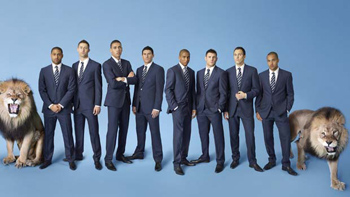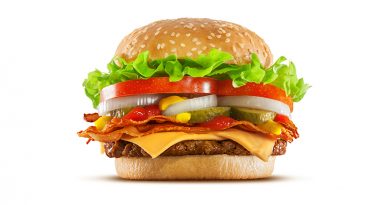The World Cup of Brands part 2: Water breaks and Ad breaks.
Posted by : Dr John Jewell
In February of this year the world governing body of football, FIFA, announced that water breaks would be introduced in some matches during the forthcoming world cup. FIFA Chief Medical Officer Jiri Dvorak commented that the decision to interrupt the flow of the matches was taken with respect to the high temperatures in some parts of Brazil during the competition and ‘based on scientific data’. It is thought that the breaks will be for three or four minutes in every half-hour of football. If the temperature is forecast to be above 32 degrees at kick-off time then the special time-outs will be applied.
These short breaks could mean, as the Daily Mirror and Daily Mail have pointed out, that viewers across the world will be exposed to advertisements during matches for the first time in a major competition. According to the Daily Mirror, TV companies will be given at least 24 hours’ notice of the fixed stoppages and FIFA have told broadcasters that priority on in-game advertising breaks must be given to official World Cup sponsors – including Budweiser and McDonald’s – or the governing body’s six ‘partners’ including Coca Cola, Sony and Adidas. In order to fully understand what advertising revenues mean to TV companies, consider the fact that ITV could charge as high £300,000 for a 30-second commercial during matches featuring England. This is, according to the Guardian, likely to be higher than what is charged for a slot in the X factor final.
I’ve written elsewhere about corporate influence on sport and this latest development is another indicator of how far commercialism extends into the fabric of global sporting events. No one is denying that measures to safeguard the health of players in exceptionally inclement weather is a good thing. At the same time the three or four minute water breaks in each half of play represents an excellent opportunity for advertisers to broaden their influence into the hitherto sacrosanct and commercially barren 90 minutes. Could it be just the beginning of a process which sees the fragmentation of ‘soccer’, an inexorable progress toward the American football model where in a typical match there are as many as 20 commercial breaks, ten in each half, lasting usually from one to two minutes each?
Overly simplistic of course and gridiron is fundamentally more suited to interruption than association football, but in an environment where sponsors pay fantastical amounts they will seek maximum return for their money.
This can result in rather ludicrous situations. England’s all encompassing contract with Nike (worth £25 million per year until 2018) stipulates that every time they train in public they also have to be seen to be kicking Nike balls. It also states that they have to exclusively use Nike footballs in home friendly matches. This means that England were not able to use the Adidas manufactured official World Cup ball in the recent friendly against Denmark. The rule clearly also applies to the last home friendly against Peru on May 30th. Thus, the time England has to get used to the official World Cup tournament ball is compromised by a commercial partnership.
But such deals are lucrative for the FA and bring in huge sums. Let’s consider the England team’s World Cup sponsors. The ‘FA Partner Programme’ has Vauxhall as lead partner, Nike and Mars as ‘supporters’ and Carlsberg, Lucozade, Nivea and Marks and Spencer as ‘suppliers’. In 2011, the FA and Vauxhall signed a three and a half year agreement and although the exact sums have not been disclosed, Marketing Week magazine said the deal was worth ‘up to £6 million a year.’ The agreement sees Vauxhall sponsor all 23 England sides, including the women’s teams, men’s youth teams and all the England disability sides. The company is also the official vehicle supplier to the FA.
The notion of ‘supplying’ already fabulously rich young men with all manner of trinkets and baubles in order to engineer sales by association is in full flow. Earlier this month the FA signed a deal with Samsung (shirt sponsors of Chelsea) to provide the England team with Galaxy G5 handsets. Speaking about the partnership, FA commercial director Stuart Turner, quoted in Marketing Magazine said: ‘Samsung has a fantastic heritage in football across the globe and in such an important year, the team will be flying out to Brazil with the best possible mobile devices at their fingertips.’
So you can picture the scene: Gerrard and co will be driven to the airport in cars supplied by Vauxhall, dressed in suits provided by Marks and Spencer, eating Mars bars and drinking Carlsberg whilst perusing the Samsung Galaxy S5 device’s health features such as a heart-rate monitor.
The maxim from the classic film Withnail and I ‘free to those that can afford it, very expensive to those that can’t’ springs to mind here, especially when one considers the price of the Nike manufactured England World Cup replica jerseys. It was announced in March that the adult ‘Athlete Match Day’ versions of the shirt, the like of which will be worn by the England team costs £90. Insult was added to injury when it was quickly realised that the previous ‘new and exclusive’ home kit manufactured by Nike had been new and exclusive for only seven matches.
The fact is that the average fan is expected to pay ever more inflated prices, with greater frequency, for products whose novelty is as ephemeral as the hope of England actually winning the World Cup. Nevertheless pay we do, as professional sport in general continues to be more about profit and commercialisation than the welfare of its supporters or, as would seem to the case in Brazil, the wishes of the majority of the nation.
All this is nothing new, however. What is new is the decision to allow breaks in play in a major tournament. Irrespective of the valid concerns over heat exhaustion, the three or four minutes extra minutes in every half-hour of football is another revenue stream. Imagine what will happen in Qatar in 2022 where summer temperatures can reach 45 degrees Celsius! Without air conditioned stadia the breaks would have to occur maybe every ten minutes or so. Ah, so that’s why the tournament is going there………




